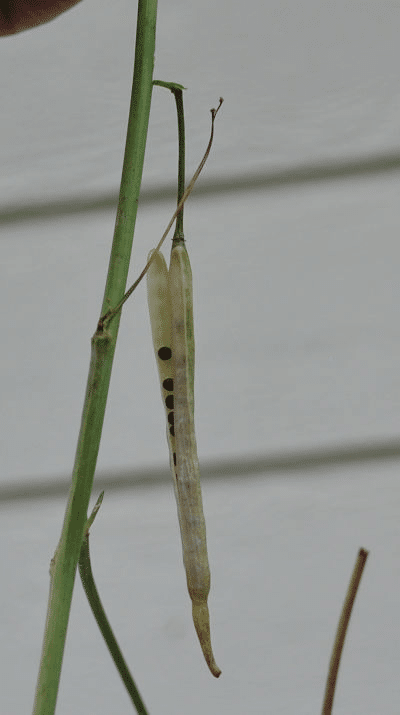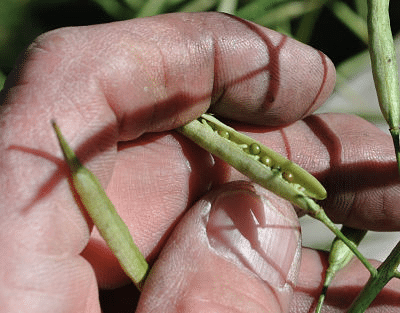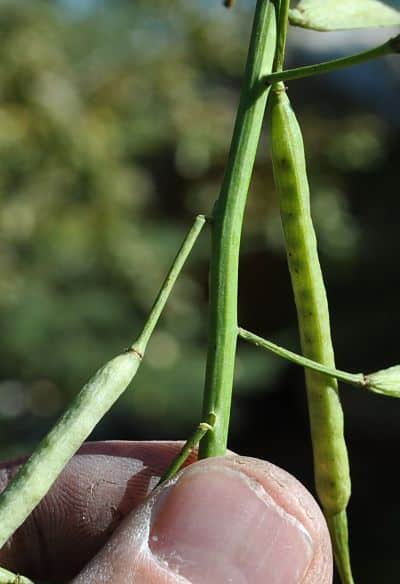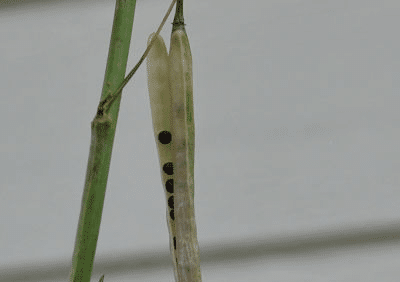Frost on pods can stop plant development and lock in green. It can also cause pods to split. However, a light frost may have no effect at all, and the crop will be better left to mature fully.
To determine which situation applies in a frost situation, do the following:
—Check standing canola the morning after a frost.
—Before taking any action, wait at least 4-6 hours after frost to allow the full extent of frost damage to become evident. The crop may look undamaged that morning but by the afternoon wilting, desiccation and pod splitting may begin. This crop may need to be swathed to preserve yield, but keep in mind that high green counts are likely.
—Light to moderate frost damage may take longer to show up. If no damage is evident after the first day and you decide to leave the crop, scout again after 2 to 3 days to reassess.
—If most or all seed is mature and you planned to swath the day after a frost anyway, then don’t bother waiting 4-6 hours. Just start swathing.
Responses for heavy and light frost
Heavy frost… below -2°C: Assess the damage in early afternoon. Check pods for a white, wilted appearance. Pod shatter and pod drop could begin within a day, especially with warm sunny afternoons. If pods are desiccating rapidly, swathing right away will preserve as much yield as possible.
For canola with high seed moisture, frost in excess of -5°C is generally lethal, resulting in non-viable seed. At such low temperatures, ice crystals physically disrupt structures such as membranes and enzymes. Pods of immature canola crops frozen at lethal temperatures have been observed to turn black, whereas mild frost turns pods white or white-speckled.
Light frost… above -2°C: Hold off swathing. Check in the afternoon for wilting to make sure frost damage was not heavier than expected. You may see some speckling on the stem and pods, but this is of little concern as long as the plant is still alive. If no wilting, leave the crop standing and check daily.
What to look for during daily monitoring:
—If the majority of the seeds remain green and immature, delay swathing to allow for further seed maturity.
—If the pods are severely damaged and are beginning to desiccate, swath during periods of dew or high humidity to reduce the amount of pod shelling and pod drop.
Frost and quality. A killing frost will reduce quality, but that can’t be helped — whether you swath today or wait. Immature seeds (moisture content higher than 20%) will be damaged. Seeds with less than 20% moisture will normally escape damage. Green seed is the major downgrade that results from frost.
Further reading:
Frost in the forecast: Swath now or leave it standing?
Swath or straight combine frosted canola?
Click here for more information on assessing crops following fall frost.




